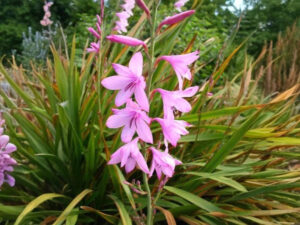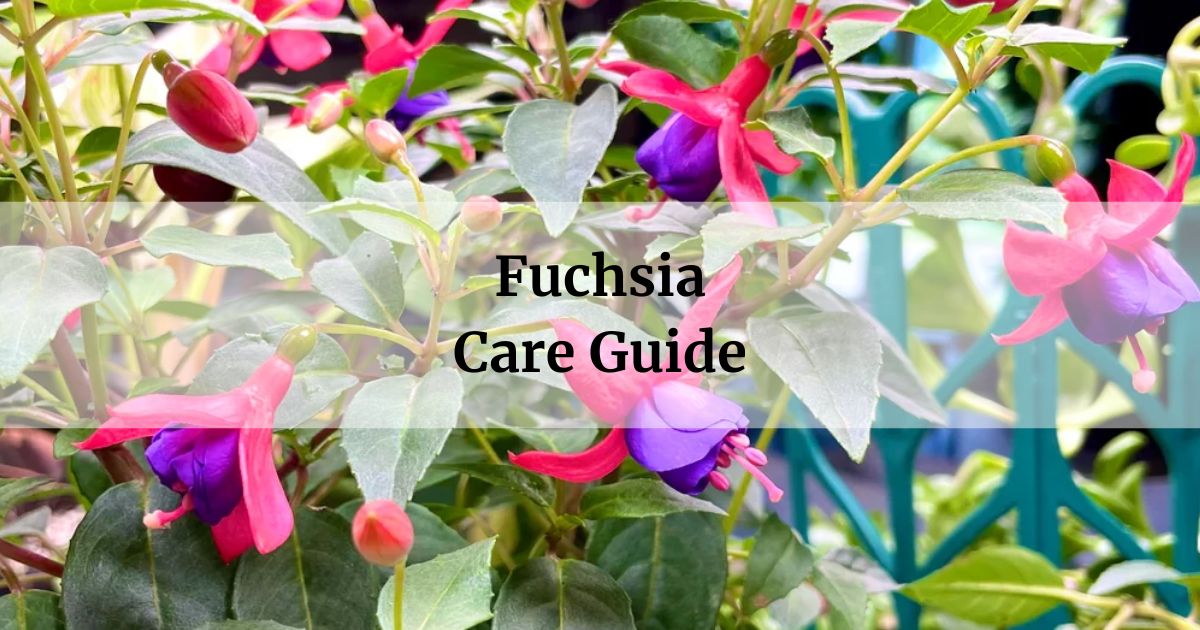
Fuchsias are such a delight – I’ve always loved their unique dangling flowers. With their colorful blooms and lush foliage, fuchsias are surely one of the most beautiful hanging basket plants. The first time I saw one in full bloom, with its vibrant flowers in shades of red, pink, purple and white – I was instantly smitten!
- Pros
- Gorgeous flowers
- Vivid colors
- Low maintenance
- Heat tolerant
- Cons
- Can be susceptible to pests
- Prone to root rot if overwatered
- Toxic if ingested by humans or pets
In this article
- 1 Appearance of the Fuchsia
- 2 Toxicity Level of Fuchsia
- 3 Light Requirements for the Fuchsia
- 4 Watering the Fuchsia
- 5 Fertilizing the Fuchsia
- 6 Potting the Fuchsia
- 7 Propagation of Fuchsia
- 8 Growth and Development of the Fuchsia
- 9 Managing Pests and Diseases for the Fuchsia
- 10 Complimentary Plants with your Fuchsia
Appearance of the Fuchsia

Fuchsias have an eye-catching appearance. The plant has soft, hairy stems that can grow between 6-24 inches long, depending on the variety. The leaves vary in shape but are typically heart-shaped. But it’s the pendent blooms that really stand out. They dangle below the foliage in a double corolla form – with the inner petals overlapping the outer ones. Fuchsias come in a very wide range of colors including reds, pinks, purples, and white.
Key Features:
- Heart-shaped leaves
- Dangling flowers below foliage
- Blooms from summer to fall
- Red, pink, purple, white flower colors
- Varieties range widely in size
Great for People who:
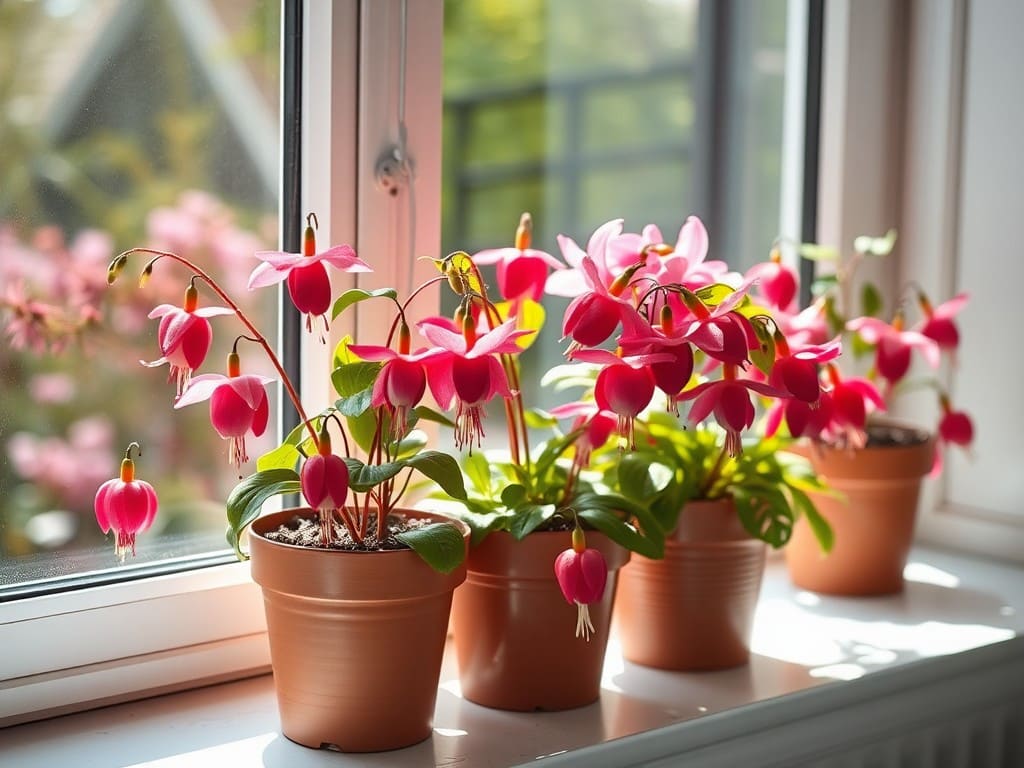
Want a plant with bountiful color throughout the summer and fall months. With continuous blooms, fuchsias are sure to brighten up any outdoor space.
Great for these Spaces:
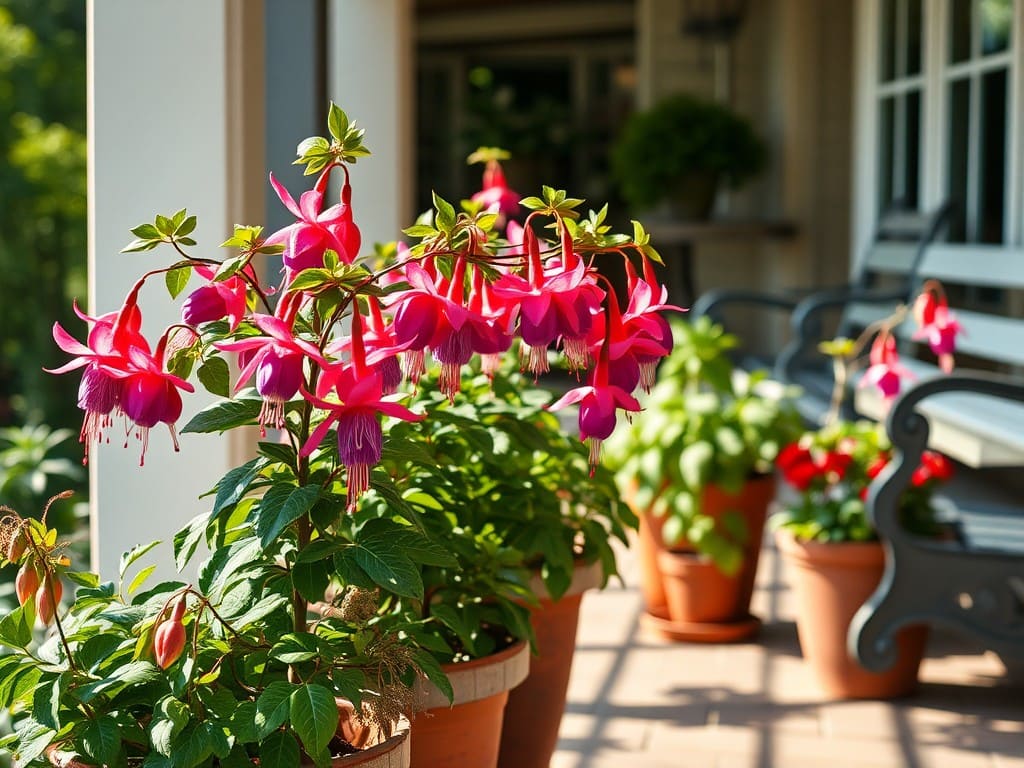
Fuchsias are perfect for porches, patios or hanging baskets. I think they particularly shine when used as a spiller in hanging baskets or containers.
Caring for Fuchsias
Fuchsias are fairly low maintenance but do require some care. They grow best in rich, medium that drains well. Feed monthly with a balanced liquid fertilizer during the growing season. Prune regularly to encourage bushy growth and more flowers.
Toxicity Level of Fuchsia
All parts of the fuchsia plant are considered toxic if ingested by humans or pets. While they won’t likely cause death, the toxins can cause upset stomach, vomiting, and other issues. Keep away from young children and pets.
Light Requirements for the Fuchsia
Fuchsias thrive in bright, indirect light. Direct sun can scorch their delicate leaves and flowers. They make great houseplants because they are shade plants.
| Light Conditions | Effect on Fuchsia |
|---|---|
| Bright Indirect Light | Ideal – encourages abundant blooms |
| Low Light | Flowers and growth will be leggy and sparse |
| Direct Sunlight | Leaves and blooms may burn |
For indoor growth, a south or east facing window is perfect. Supplement with grow lights in winter if natural light is low.
RELATED: 10 Best Indoor Plants for Low-Light Areas
Watering the Fuchsia
Fuchsias need consistent moisture but good drainage is key to prevent root rot. Some tips:
- Check soil daily – water when top 1-2 inches are dry.
- Water deeply until it drains out bottom holes.
- Avoid getting leaves wet when watering.
- Reduce watering in winter when plant is not actively growing.
Fuchsia Double Petals 100 Pcs Seeds
- 60 days easy returns
- High germination % rate
- Handpicked quality seeds
Fertilizing the Fuchsia
Fuchsias are heavy feeders – fertilize monthly to promote abundant blooms. A balanced liquid plant food mixed at half the recommended strength works well.
| Month | Recommended Dosage |
|---|---|
| Spring (March-May) | Monthly |
| Summer (June-August) | Every 2-3 weeks |
| Fall (September-November) | Monthly |
| Winter (December-February) | Not necessary |
Potting the Fuchsia
Use a well-draining potting mix for fuchsias. Repot in spring if roots are circling or it’s been 2+ years. Prune roots and stems as needed, then replant in a pot just 1-2 inches larger.
Propagation of Fuchsia
I’ve found fuchsias very easy to propagate from stem cuttings. Simply trim 4-6 inch stems right under a set of leaves, strip the lower leaves, and plant cuttings in a container. Maintain warm 70-75°F temperatures and medium moisture. Within 3-4 weeks you’ll see new roots and growth!
Growth and Development of the Fuchsia
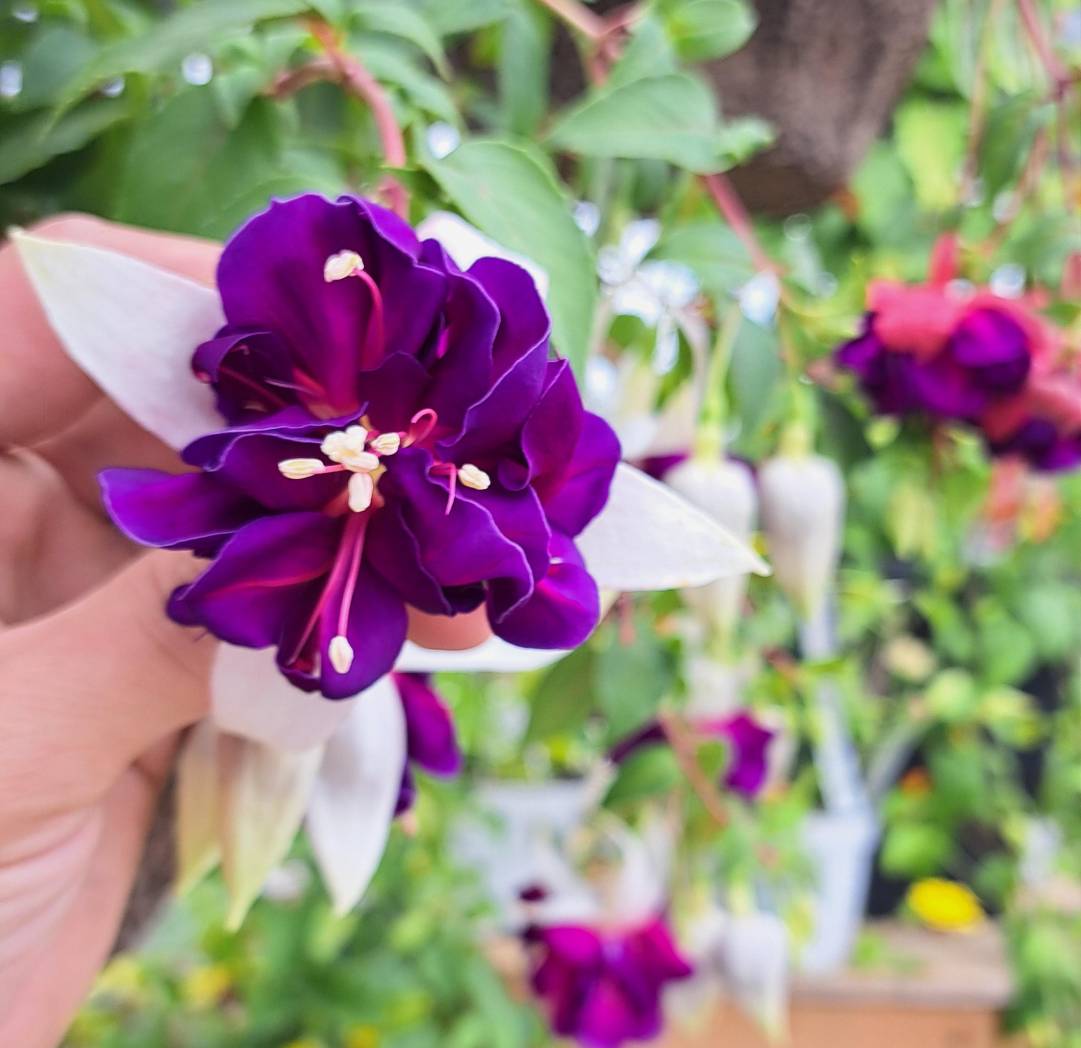
Fuchsias grow best in warm, humid conditions between 65-80°F. They have a more compact growth in summer heat. For best flowering indoors, maintain 50-70% humidity. Blooms may cease in very low humidity below 30%.
Prune plants regularly to maintain bushy shape and encourage repeat flowering. Always remove spent blooms to rebloom. Wipe down leaves periodically to remove dust.
Fuchsias are most typically grown between spring and fall. Enjoy them indoors as a houseplant during winter.
Managing Pests and Diseases for the Fuchsia
Watch for signs of pests like aphids, spider mites or whitefly and treat accordingly. Common diseases include powdery mildew – remove affected growth and water carefully. Ensure good airflow and prune regularly to promote drying and prevent diseases.
Complimentary Plants with your Fuchsia
- Petunias
- Begonias
- Impatiens
- Coleus
- Dusty miller
- Ivy
Frequently asked questions
How do I encourage repeat blooming on my fuchsia?
Remove spent flowers promptly.
Is it best to bring fuchsias indoors over winter?
es, most varieties are half-hardy annuals needing winter protection below 40°F.
Do fuchsias bloom non-stop throughout the season?
With good care, fuchsias will bloom abundantly from mid-summer until first frost. A few varieties bloom all season.
How do I get more flowers on my fuchsia?
Provide a spot with at least 6 hours of direct sun, fertilize monthly, prune regularly, and remove spent blooms promptly. With optimal care they should flower continuously.
With their cheerful flowers and carefree nature, fuchsias are some of the most vibrant and beloved plants to grow. I hope you’ll give one a try this season to brighten your garden.






